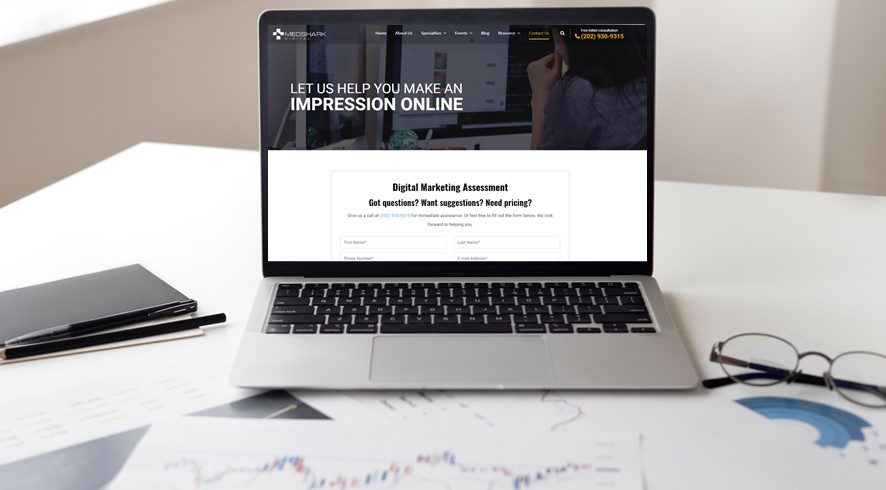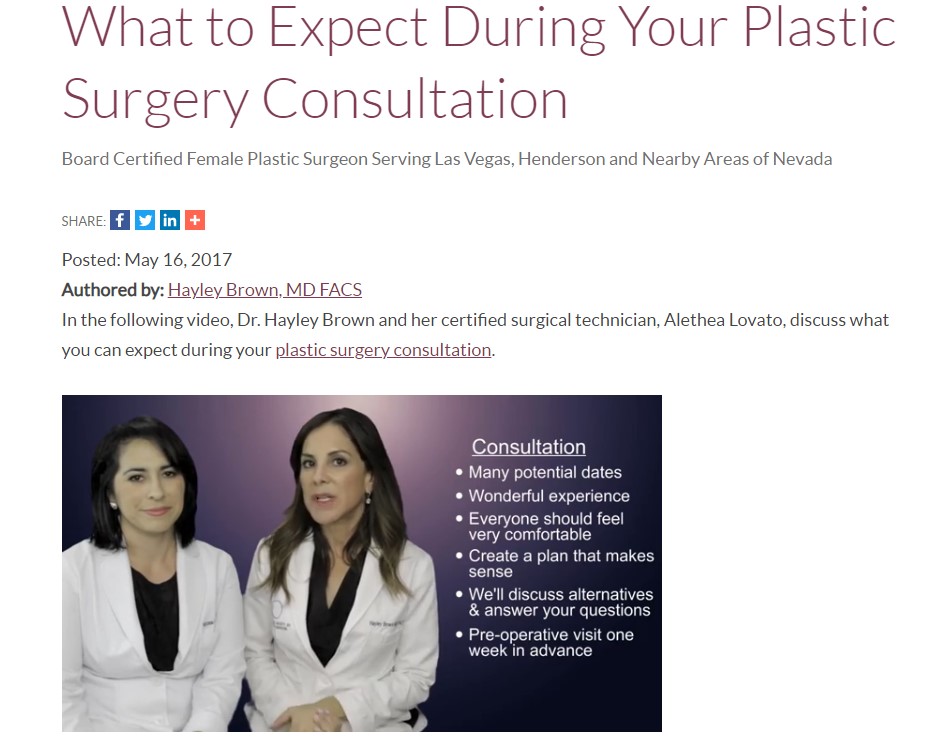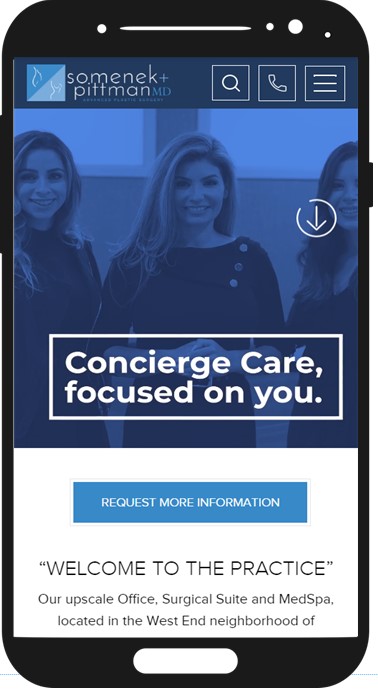

Generating high-quality traffic to your website continues to be more competitive and increasingly expensive. However, lowering your exposure costs will not increase your ROI; it will just reduce your exposure and opportunities.
The biggest key to lowering your cost per acquisition (new patient), is improving your conversion rate.
Of course there are several “touch points” in the patient acquisition process where your conversion rate will determine if your marketing investments are mildly, or wildly successful.
But it all starts with converting your initial exposure on your website. Yet, far too often, practices overlook this critical ROI junction. They are enamored with the design of their website and mistakenly assume that the appearance alone will convert visitors into leads.
Here are some best practices to take your design to the next level.
Potential cosmetic patients definitely shop and compare. Do not assume your website is the only one they will visit. Check out your biggest competitors’ websites and see what call-to-action elements and offers they promote. In most cases, you will find you have the same call-to-action as all your competitors: Schedule a Consultation. Don’t just copy their strategy; find other “next step” alternatives that don’t require as big of a commitment. Not everyone is ready to make the leap to book a consultation. Lower the barrier of entry and get more visitors engaging with your practice.
 When you strategize your updated calls-to-action, make sure you are clear what they are, and what’s in it for your visitors. If you have a downloadable consumer guide, make it visual and highlight high-interest topics. Even if you use Schedule a Consultation, breakdown the unknown and let visitors know what to expect, what is included and create value. By effectively communicating the benefit to your users, you will get more of them to take the action you want.
When you strategize your updated calls-to-action, make sure you are clear what they are, and what’s in it for your visitors. If you have a downloadable consumer guide, make it visual and highlight high-interest topics. Even if you use Schedule a Consultation, breakdown the unknown and let visitors know what to expect, what is included and create value. By effectively communicating the benefit to your users, you will get more of them to take the action you want.
In a 2020 Podium study of what customer want, 85% of marketers say customers want to pick the communication method that works best for them. This is especially important when marketing to market-driving Millennials who have grown up on technology. No longer is a Contact Us form enough. Offering more digital communication options is key to maximizing conversions. Chat and text messaging are now essential for high-conversion websites.
One thing to note: the same study also showed 92% of consumers prefer communicating with a real person than an automated menu or bot. If you have never used a chat/text messaging service, I suggest you consider starting with one that uses live people. The cost per lead may be a little higher, but the end game is all about conversions.

If you are like most practices, most of your visitors are mobile visitors. Yet, most practices assess their calls-to-action, and conversion elements on their desktop. Make sure your most important conversion elements enhance the mobile user experience. Placement on the page, contrasting colors, and messaging are all keys to ensuring visitors find them and engage.
Create custom call-to-action elements that subtly enter the screen based on the user’s activity. This includes “next step” banners that rises into the screen when visitors get to the end of the page or give exit popups a try. In addition to getting attention, these dynamic engagement elements also maximize screen space as visitor scroll down the page.
Although it is important to offer digital communication options, telephone calls are still the highest quality leads and convert into consultations and patients more than any other lead type. Not only is your team better trained to deal with them, but callers are usually at a later stage of the buying cycle and willing to personally engage. Make sure your conversion strategies include telephone-focused calls-to-action. On mobile, make sure all phone numbers are universally programmed for touch-to-call and consider using a persistent banner with phone link (stays on the screen even when users scroll down the page).
To help those on the edge make the leap, use your strongest trust-building assets – Third-party patient reviews (Google, Facebook, Healthgrades, RealSelf, etc.) and testimonials. If possible, take it to the next step and utilize video patient interviews to tell compelling stories, communicate enthusiasm, and instill trust and confidence.

Timing is everything when it comes to lead conversion. Anticipate the emotional state of visitors when they reach key “destination” pages or sections. We all know that cosmetic patients choose to have surgery or treatments emotionally. And no other pages stir emotion and stimulate desire more than your before and after pages. Develop creative, unique calls-to-action for these visitors and leverage the emotional momentum created by your results.
These are just a handful of best practices and missed opportunities. When executed correctly, they can increase your conversions and generate more leads and new patients without you having to spend more marketing dollars.
The next step is to make sure you convert these leads into scheduled consultations. Look for our next post: Keys to Convert Leads into Consultations.
Take a peek and check out our recent MedShark Insider Interview with Dylan Kemna of OptiCall to avoid lead intake pitfalls that can cost your practice thousands of dollars each month.